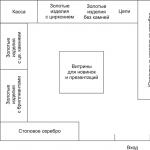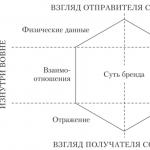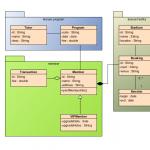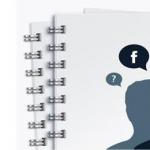Company loyalty b2b. What loyalty programs are effective in b2b
Many B2B companies still devote the lion's share of their marketing resources to acquiring new customers, not caring about retention. But the situation is changing with changing market conditions.
When the market grows by tens of percent per year, you can not worry much about retaining customers and reducing revenue. In mature and highly competitive markets, it is impossible to be a successful company without a clear customer retention strategy.
In this article, we will share 9 tactics to increase the loyalty of B2B customers and their employees.
Analyze customer feedback
Regular collection and analysis of feedback is the foundation on which a B2B loyalty management strategy is built. It makes no sense to plan initiatives aimed at customer retention if the company does not understand what is going wrong, what “bottlenecks” slow down the growth of purchases, what the customer’s employees think about the company.
A B2B client is a two-faced Janus. On the one hand, it is an organization, a legal entity with its own rules, procedures and interests. On the other hand, specific employees whose wishes, interests and goals must be taken into account. Decision makers are the main target for diagnostics by the company. At the same time, do not forget about ordinary employees. The retinue makes the king. According to Google research, in more than 80% of cases, ordinary employees directly influence decision makers.
Feedback from customers is an opportunity to honestly look at your company from the outside and understand what needs to be changed in order to become a more attractive supplier and partner.
Key questions to know the answers to:
- How satisfied are customers with the quality of products and services provided? How is the attitude towards the company changing?
- What needs to be changed in business processes to make it more convenient for customers to work with the company? Which clients are inclined to refuse the services of the company and why?
- What factors influence the decision making process?
- Who makes purchasing decisions in an organization?
- How does the company differ from competitors from the point of view of the client?
Use discounts
Discounts are the easiest way to encourage customers to make purchases from your company. This approach is best suited for companies where purchases are one-time and not tied to long-term contracts.
Keep in mind that discounts should be aimed at stimulating repeat orders, increasing the volume of purchases, and expanding the items consumed. Otherwise, your discount is an attraction of senseless generosity.
The discount system should clearly fit into your pricing strategy. If you dump, you reduce the margin of sales and the value of your products. Use discounts as a way to encourage and stimulate for something. Do not provide default discounts.
Offer special conditions for the most valuable customers
 Differentiating customers by their value is the second most popular and easiest way to increase the loyalty of B2B customers. The company's goal is to focus on the most marginal and promising customers. Such clients are the main driver of the company's growth.
Differentiating customers by their value is the second most popular and easiest way to increase the loyalty of B2B customers. The company's goal is to focus on the most marginal and promising customers. Such clients are the main driver of the company's growth.
This does not mean that other customers should be treated with disdain. The tiering system allows you to create additional features and services for your most valuable customers without compromising other customers.
Most often, companies implement a system of levels tied to discounts that depend on the volume of products purchased. Such a model, of course, gives its result. But it will be more effective if the company thinks through the non-material aspects of incentives, as well as indirect material motivation.
When developing a tiering system, it is important to pay special attention to what customers need, what needs they have, how you can help the customer staff who interact with you.
Provide personal service
The most valuable customers should receive not only special conditions, but also personalized service. Each such client should be assigned an account manager who oversees all relationships and is often a single point of contact.
Dedicated managers are an expensive pleasure, so the company must clearly calculate the economic feasibility of such a step. How much will sales increase? How much would a company like this service cost?
Companies that work with large clients with a complex decision-making model have key account managers on their staff. This is a prerequisite for successful business development.
For companies whose clients are representatives of small and medium-sized businesses with low volumes of purchases, the need to provide a personal manager is a matter of economic feasibility and operational efficiency.
Is it possible to do without a dedicated manager by automating business processes? There is a methodology called Account Based Management (ABM), where the main focus is on the personification of customer relationships. This approach is characterized by a high level of automation of work with clients.
Activities related to lead generation, demand formation, communications, service are implemented automatically based on a constant feedback analysis. ABM radically changes the sales model and the requirements for the number and competence of managers involved in communication with customers.
When introducing new concepts, it must be borne in mind that even in the case of a high level of automation of client processes, there is still a need for managers. In B2Bx, personal relationships are extremely important, which, fortunately or unfortunately, cannot be automated. Therefore, the question of balance between a personalized approach to sales and automation always remains relevant.
Train and develop clients
 The better customer representatives understand your product, the more loyal they are and the more they buy. Often the main reason for the failure of the transaction is not competitors, but low awareness and misunderstanding of the proposed solution on the part of the customer. This is especially true when it comes to innovative solutions.
The better customer representatives understand your product, the more loyal they are and the more they buy. Often the main reason for the failure of the transaction is not competitors, but low awareness and misunderstanding of the proposed solution on the part of the customer. This is especially true when it comes to innovative solutions.
Courses, webinars, e-manuals, research, trainings, useful publications are a tool for educating clients' employees. This is an investment in long-term relationships and their loyalty. In the learning process, the company receives feedback, assess needs, identify problems when interacting with its products and solutions.
Educational activities create added value that retains existing customers and attracts new ones. At the same time, educating customers is not only for high-tech companies. In any field of activity, there is something that is important to tell the client about in order for him to use your products or services more effectively.
Large companies can use training to develop their customers by giving them access to best practices and knowledge. This win-win strategy works great for loyalty. A number of Russian banks successfully use this approach in their activities.
Create additional opportunities
Access to additional features that are not directly part of the delivery or contract is a great way to strengthen relationships with existing B2B customers. Free access to a new product for a period of time, special conditions for receiving a service, personal promotions, access to useful materials and research are examples of such opportunities.
Additional service cements relationships with customers, creating stronger partnerships. In addition, additional opportunities can and should be a way to expand customer needs and create demand for the company's products and services.
Create a positive perception of the company
 In B2B, the emotional factor plays an important role in decision making. Just irrational preferences are packed into rational justifications. Positive emotions "silence" doubts about the supplier or certain terms of the contract.
In B2B, the emotional factor plays an important role in decision making. Just irrational preferences are packed into rational justifications. Positive emotions "silence" doubts about the supplier or certain terms of the contract.
The formation of a positive emotional background is not a one-time task, but a purposeful and systematic work. The setting of tasks in this direction should be carried out at the same frequency as the supply planning. Use surprises, hold joint informal events, create occasions to once again please the client's employees and emphasize their value, professionalism and authority.
Active customer experience management (CEM) is one of the biggest trends in B2C. The main goal is to create a positive feeling from interaction with the brand. Perception depends on the quality of products, service and, last but not least, on the emotional background that the company forms around itself.
In B2B, customer experience management is no less an urgent task. How to evoke positive emotions when communicating with customer employees with your company? How to smooth out the negative moments that may arise during the interaction. Think about the answers to these questions and integrate the solutions found into your daily activities.
Give branded gifts
How to make sure that customer employees do not forget about you? There is an old but perfectly working way - make useful and beautiful branded gifts. Calendar, pens, flash drives, T-shirts and other accessories work for loyalty no worse than discounts.
Such customer rewards cannot be classified as a bribe. If you like them, they will remind employees of your company for a long time.
Tell the success story of your clients
 How to praise a client so that it does not look like flattery? Tell his success story! Share information on your website and in the media, talk about case studies at conferences, publish joint research, and interview key customer representatives. Include such content in your content plan.
How to praise a client so that it does not look like flattery? Tell his success story! Share information on your website and in the media, talk about case studies at conferences, publish joint research, and interview key customer representatives. Include such content in your content plan.
Such initiatives strengthen relationships with clients and create new opportunities for joint PR activities. The success story works great for building relationships with decision makers and experts. The case should emphasize the merits of specific employees on the part of the client. Career and professional growth of the customer's employees loyal to you strengthens the position of the company, creates opportunities for expanding cooperation.
 |
Affiliate network is one of the most effective sales channels for products. Well built affiliate program allows manufacturers to ensure revenue growth, successfully develop new markets and expand their areas of presence. Most manufacturers with federal ambitions have grown through the development of affiliate sales. For example, a company 1C in many ways has become a leader in the field of enterprise automation in small and medium-sized businesses through the creation of an extensive partner ecosystem. What makes an affiliate program successful and attractive to the parties?
- Product in demand on the market.
- Attractive financial terms of cooperation.
- High level of service and flexibility of work.
- Support and training b2b partners.
In addition to these criteria, one important factor is often forgotten, which is often decisive. We are talking about the motivation of employees of partner organizations. This is especially true for markets with a high level of competition, where all manufacturers offer approximately the same conditions for their partners.
In our practice, we have often encountered similar situations. For example, in one case, we found that partner sellers were more active in offering competitors' products to customers, despite less attractive financial conditions for the partner. The problem turned out to be that the procedure for ordering the company's products required more effort from sellers than when ordering competitors' products. To solve such problems, it is often used b2b loyalty programs. Similar programs are aimed at sales promotion through a partner channel and allow you to synchronize the interests of the manufacturing company, partner organizations and their employees.
The b2b loyalty program is designed to achieve the following goals:
- Increasing the motivation of employees of partner organizations
- Increasing the share of products sold in the partner's assortment compared to competitors
- Increasing awareness of the company's products among employees of the partner organization
- Reducing the cost of partner network management
Program Features
The main difference between b2b loyalty programs lies in its dual nature. On the one hand, it is aimed directly at partners as legal entities. On the other hand, specific employees of the partner organization interact with it, and they may have different job responsibilities and, accordingly, diverse interests and needs.
Therefore, the b2b loyalty program is built on elements borrowed from various concepts - channel management, staff motivation system, b2c loyalty program. If at least one of these elements is ignored in the design of the program, the chances are extremely high that the program will not work.
Errors in implementation
Our company is often involved in the audit and optimization of partner loyalty programs. Below are the main issues that we identified in the analysis:
- The program is not supported by the management of partner organizations. The conditions are unattractive, bonuses to employees are considered as a violation of the system of personnel motivation adopted by the partner. This is especially true for partners who simultaneously represent many manufacturers in various categories on the market (for example, distributors of building materials).
- Misunderstanding and / or ignoring the interests of various roles within the partner organization. Company management, salespeople or engineers all have different interests, needs and opportunities to communicate with the manufacturer.
- The complexity of the rules or the inconvenience of using the program. For example, in one case, the program was implemented on a site that was not adapted for viewing through mobile devices. At the same time, the target audience of the program was foremen of service companies who are on site and do not have desktop computers or laptops at hand.
- Lack of understanding of business processes of partners and their rules. It is impossible to take into account the characteristics of each of the partner organizations, but it is extremely useful to understand how their business and key processes are built in order to identify potential bottlenecks in a timely manner. Logistics is often such a bottleneck.
- Choosing the wrong communication channel. A typical example - the use of e-mail to interact with doctors has an extremely low efficiency. The reason is the low level of automation of medical institutions, most doctors work the old fashioned way - they do not use a computer for work purposes and do not have a working e-mail even in commercial clinics.
Basic elements
Not many companies offer B2B loyalty program development services. This is due to the fact that each implementation is a unique project that requires deep immersion in the customer's subject area and its business processes. At the same time, there are basic elements that are inherent in any of the loyalty programs. We use our own methodology in our practice, consisting of four main layers. Let's consider them.
Loyalty Program Scenario
The scenario of the program should be extremely simple and not requiring serious efforts on the part of the partners' employees. At the same time, one of the main tasks of the loyalty program is to increase the attractiveness of the affiliate network. Therefore, the program should not exist independently from the processes of working with partners, but, on the contrary, be closely intertwined with them.
Participant motivation system
The main emphasis in the development of a motivation system should be placed on building trust in the program, since the management of partners, as a rule, has increased requirements for its transparency in terms of interaction with staff. It is also necessary to pay special attention to the development of individual incentive models for the various roles of the partner's employees.
Ways to Involve Participants
The engagement strategy is a critical component of the program. Members have a thousand and one reasons to forget or not use a loyalty program, especially if it does not involve instant returns. Therefore, it is essential to define an engagement and retention strategy before launching a program and adapt it as it is implemented.
Communication model
The main requirements for communications within the program are the availability of convenient feedback and an individual style of communication with different types and roles of employees. Building sustainable and convenient communication channels with feedback allows you to influence not only the activity of participants, but also significantly reduce the budget for incentives. A typical situation is when a company tries to increase activity in the loyalty program due to more attractive financial conditions, but does not achieve the expected result. During the analysis, it turns out that only about 15% of participants use the program. The rest simply did not learn about new profitable offers. The same participants who took advantage of the new offers actively participated in the program.
The implementation of any program or project can be compared to cooking a meal. It seems that all housewives cook according to the same recipes, but the taste of dishes can be very different. However, below are some tips for developing an affiliate loyalty program that I hope you find helpful.
Pay attention to communication with the leadership of the partner organization
In the absence of support from key people in the partner organization, it is difficult to count on the success of the program. This is a blocking factor that is often mentioned when the loyalty program is already running. Based on the size of the network, as well as the specifics and size of partners, it is necessary to determine the best way to convey information about the planned program and analyze the feedback.
Integrate loyalty programs into company business processes
The synergistic effect from the launch of the loyalty program is achieved when it is integrated into the company's business processes, ranging from marketing ending with logistics and customer service. The program should complement and enhance the company's competitive advantage. Integration should cover information systems, job descriptions and employee KPIs. It is important to attend to the training of employees interacting with partners in a timely manner.
Motivate the right partner employees
Determine the roles of partner employees who most depend on the sales of your products and the satisfaction of end customers. It can be not only employees who communicate directly with customers. Often bottlenecks occur in supply chains or at the level of purchasing managers.
Develop and test a communication strategy with partners
Focus on improving the quality of communications with the partner's target employees. Determine the appropriate communication style, select relevant channels. It is important that messages within the program help participants achieve the goals of the program, and not just inform. A simple example is that a message about a bonus accrual can contain a short tip from the “Did you know that …” heading, or a link to an article describing a new line of company products that this employee will work with.
Combine different ways of motivation
At the stage of analysis of the target audience of the program, it is necessary to identify the key types of partners, as well as the roles that directly or indirectly affect the sales of your products. As a rule, the model of behavior of small partners is more similar to the behavior of individuals. In this case, it is advisable to use the motivation system inherent in traditional b2c loyalty programs.
Conclusion
B2B affiliate loyalty programs are not loyalty programs in the classic sense of the term. In addition to material motivation based on the “do A, get B” principle, educational elements can be implemented in them, as well as individual functions of the affiliate network management process that add value to the entire system.
B2B loyalty programs are not as popular as mass market programs. However, experience shows that such initiatives are a useful add-on to an affiliate program. They allow you to increase sales through a partner channel due to a targeted impact on all links involved in the sales and service chain.
- What are the loyalty programs in the b2b segment
- How to find out which elements of the loyalty program will be of interest to your customers
- What percentage of the profit can be spent on the club loyalty program and what return should be expected
At b2b marketing three main tasks: to attract new customers, develop relationships with them (work to ensure that the average check grows and orders are made more often) and reduce their outflow. These problems can be solved in different ways. This article opens a series of publications on b2b marketing techniques. In each article, my colleagues and I will consider one tool, the effectiveness of which has been tested in practice. Now we will talk about loyalty programs: I will tell you which program helped our company increase sales to many customers by 30%.
What are the loyalty programs
Loyalty programs used by various enterprises can be divided into three types.
Rollback. The easiest and most inefficient way, as it gives only a short-term result. The bottom line is simple: for a reward or gifts (for example, vouchers), the decision maker chooses the most generous supplier. To continue cooperation, the buyer needs to be constantly pampered with something. I have never used this method.
Bonus programs: gifts for points. This is a popular method of gaining loyalty in the b2b segment; in fact - a slightly improved version of the rollback. Here's how the bonus program works in practice: for making purchases to a decision maker, the supplier accrues points, which he exchanges for something useful for himself. A gift can be, for example, household appliances or even money. Such a program is tied to a specific buyer and improves only his loyalty, while for productive and long-term cooperation it is necessary to increase the loyalty of the client company as a whole.
Solving customer problems that are not directly related to your product. Let's say you sell cement and quite successfully compete with other suppliers in terms of quality and price. But these two factors are not the only important ones for the customer, he has other problems as well. For example , it is profitable for him to buy products in large quantities, but there is nowhere to store them. By relieving the client of this difficulty, you will win his loyalty. That is the way we went.
First you need to understand what problems your customers have.
The idea to increase customer loyalty by helping to solve their problems appeared a long time ago. There are two ways to understand what problems are relevant for the client:
- analyze the market in which it operates, its competitive environment;
- ask him himself (in a personal conversation or questionnaire).
As part of a comprehensive plan, I was given the task of forming loyalty programs in one direction b2b sales companies.
I began to look for and analyze that modest experience, those modest examples that were used in Russian industrial marketing for increase loyalty to the brand and to the product. I tried to collect the main points, structure, and, in fact, present them here in a small article.
And so, for starters, the general moment - educational program. Loyalty program, what it is?
Loyalty program is a set of marketing activities aimed at retaining or increasing sales of a product / service to existing customers and promoting the company's corporate values in the market.
It is important to draw a line between the concepts loyalty and satisfaction. I understand the term satisfaction»as a feeling, an emotional state consumer caused by experience of interaction with the organization. In its turn loyalty- this is the attitude of the consumer, based on previous experience of interaction with the organization and characterized by the level satisfaction from this interaction. Thus, it turns out that the level consumer loyalty determined and based on feeling satisfaction.
Where does it start creation of a loyalty program for the industrial (b2b) market? That's right, with goal setting.
To the classification of goals that are usually set when forming loyalty programs in b2b marketing, everything is simple here, for most companies it is:
Retention of old customers;
Increase in sales.
I note that in most cases, marketing specialists initiate the creation loyalty programs for those groups of goods that are at the maturity stage of their life cycle. All this, of course, blah blah blah, but to realize what to work with and for what, of course, it is necessary.
In the second stage - the definition of tools that will be used to influence customers:
Discount systems
Individual discount systems
Bonus systems for distributors
Stimulating the transparency of relationships (for example, explain what the cost of goods includes, disclose pricing)
Personal relationships (personal discounts, holiday greetings, gifts)
Free trainings, product seminars
The presented tools are a squeeze from the cases and described experiences that I met in practice.
In fact, at this stage, the focus of loyalty programs is being divided - some of them are aimed at stimulating distributors, intermediaries and retailers, and some are aimed at stimulating the end user of the product - a purchasing manager, chief engineer, etc.
In conclusions and main ideas: intermediaries need to be interested, they should be given a mythical “carrot” of bonuses, end consumers should not be deceived, not let down, and as close as possible to the expectations that they place on us. Among other things, another key to the door of the end consumer called "loyalty", except as personal relationships in b2b marketing, probably not. As part of this, one of the tools formation of loyalty of the end consumer in the b2b market is a CRM-system that allows you to "remember" all the previous wishes and whims of the consumer, anticipate the emerging need and offer your product in time.
With all my thoughts and findings in this area, I will publish here, a start has been made.
On the site : b2b market, b2b marketing, b2b market analysis.
The company is a major supplier of printing equipment, with subdivisions in Russia and Ukraine. The loyalty program, in addition to the discounts that the company provided to its customers, consisted in the fact that once a year it gathered 150-200 customers in the pretentious Crimean boarding house.
Guests were offered an entertainment program: sometimes it was a theme party, sometimes the company held a printing ball. Flight and accommodation in a boarding house were paid by the company. Film and pop stars were invited to the events. The budget of such holidays ranged from 100 to 200 thousand dollars. All printers went there, as it was fun and interesting, and most importantly, it was free.
Despite this, the program did not work, as clients also attended a similar program of the direct competitor of this printing company, which was held in a nearby boarding house with a small time gap. As a result, customers, having visited the events of both suppliers, went to the third and bought from him, as he offered them the best conditions.
Positive experience of the company's loyalty program from the b2b segment
The British printing company Haymarket published a weekly magazine for printers, which was called Print Week, but in addition to this magazine, it made a huge number of so-called brand extensions - various additions to this magazine: the magazine's website, a free catalog of all printing companies in the UK, and so on.
The company also hosted an annual Print Week Awards ceremony for the best printing companies, to which it invited all of its printing clients. Ceremonies were held in Great Britain, Russia, Ukraine, India, UAE.
The budget was impressive - 250 thousand pounds. At the same time, Haymarket itself spent approximately 20-30 thousand pounds on the event. The rest was collected by attracting sponsors - these were also companies from the industry aimed at an audience of printers: suppliers of equipment, consumables, paper, each of which paid 10-15 thousand pounds for the right to become a sponsor of the event.
Annually 1200-1500 printers gathered at this event. The event was held at a high professional level, the dress code worked - for men, attendance was only allowed in tuxedos. And it has worked for Haymarket for many years. Such events are beneficial both for the organizer and for clients and sponsors.
How can loyalty programs be formed in b2b
Since customers in b2b want to feel not just a privilege, but also a significant benefit, both bonuses and discounts are important here. Therefore, it is possible to provide for simple discount programs and discount cards (with a fixed or cumulative discount, when the discount increases in proportion to the order quantity).
It can also be reward programs when customers accumulate special points that can no longer be exchanged for the products that the client orders from you at the moment, but in the future can be exchanged for other goods or services. These are the so-called coalition programs, which provide an opportunity to cooperate with other companies, for example, banks, and give the client more value.
Cash back program - when your customer accumulates points and receives an additional discount or voucher for the next purchases.
In b2b, the information support program works quite strongly - this is access to exclusive information or services that you can provide to your customers.
When sales are carried out not only in-house, but also through distribution networks, partners can be helped to conduct an advertising campaign at the local level or organize joint marketing, for example, joint participation in an exhibition.
Dealer staff can be trained. Club programs, as the Haymarket example shows, work great in b2b. One of the reasons is that in the b2b segment, companies operate in certain niches where people need to feel like they are part of something great. And if the client is a member of your club, then he receives privileges in the form of assistance in various directions.
For example, we often hold business breakfasts for our clients in different countries. And recently we launched an educational project - a series of free online webinars for clients that cover only hardcore business development topics, and we regularly invite the best practitioners from the CIS to them, thus offering additional expertise to our clients.
Club evenings, business dinners will allow your customers to feel your care for them, to feel that you are giving them something more than just a product or service, that the members of this club occupy a more stable competitive position than just market participants.
Here are the most successful loyalty programs found in b2b.
Marketing reimbursement
The manufacturer of water treatment systems, BWT, offered its distributors to share the costs of promotion. A dealer launching outdoor advertising or media publications provided the advertising layout to the company. If only BWT products were mentioned in the layout, the company paid half of the costs, and if products from other manufacturers appeared there, then its share in the costs decreased as a percentage depending on the number of manufacturers mentioned in the advertisement.
Special conditions for large clients
A loyalty program for corporate clients under this name was developed by the Yutinet.ru online store. It is built in such a way that customers can not only use the usual discounts, but also buy goods that are not in the catalog by ordering them through a personal manager. They also get access to a free cloud service - with its help, system administrators, employees of AHO services and accountants of client companies can keep records of the material assets owned by the enterprise.
Bonuses for the company and its employees
IT company TechAccess offered customers to accumulate bonuses for contracts. These bonuses can be spent both on entertainment and on useful services for business. Members of the bonus program can choose between a Mediterranean cruise, a five-star hotel stay, a visit to Formula 1, and the opportunity to take part in various conferences and trainings.
Etihad Airways launched the Etihad SuperSeller program to increase the loyalty of travel agency employees: by selling business or first class tickets, the agent receives bonus miles that can be exchanged for free flights for himself or spent on gifts from program partners, of which there are about 200.
Additional services
The Allbiz company has developed a special loyalty program for its dealers and called it “Hunting for Allbiz”. The best dealers now have the opportunity to receive additional services for free, which were paid for end users. For example, a package of teaser advertising on the trading platform, or additional tools to raise the product in the product catalog rating. Thus, dealers got the opportunity to earn extra money on this. The benefit was both for the client - he received more services for the same money - and for the dealer.
“Are you doing well? Have a good time"
Before launching the program, Cordiant's marketers did a thorough job - they found out what the target audience of the company is fond of. First, the clients found out how they are interested in spending their free time (go in for sports, gardening, tourism, cars, etc.). Then we chose the most popular categories and created a “hobby shop”. It is located on the website of the company itself. In this store, members of the program can spend the earned points on their favorite activity.
Also, points can be obtained for participation in distance learning programs.
Charity
The well-known manufacturer of calculators and printers "Citizen Systems Europe" has developed a loyalty program for its partners and called it "Citizen Consul Club".
Useful Services
"OfficeMax" - one of the major US suppliers of office supplies, has launched a loyalty program "MaxPerks" (English perks - privileges, allowances, benefits). Its action is aimed at representatives of small businesses, principals of schools, colleges and teachers.
Content of the program: When purchasing goods in the OfficeMax online store, the program participant receives back part of the money spent on his account in the same store in the form of dollars. The money you earn can only be spent there. In addition, members can earn a dollar for every OfficeMax cartridge they recycle. Thus, a program participant can earn up to $100 per month.
 |





